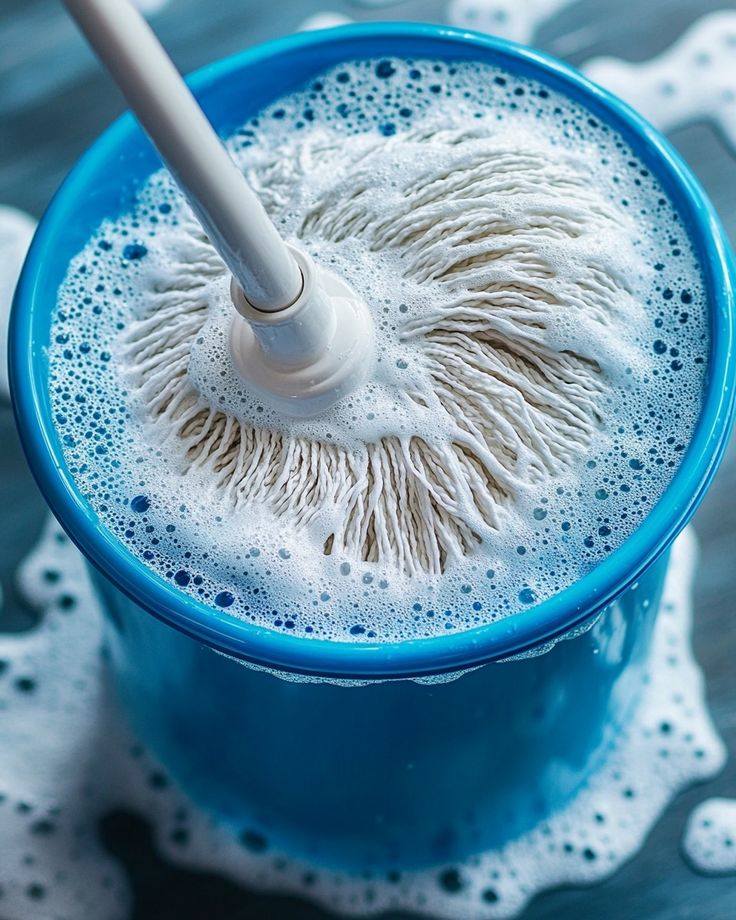ADVERTISEMENT
#### 🔧 Instructions:
##### **1. Rinse the Mop First**
Before sanitizing, rinse out loose dirt and debris from the mop head with warm water.
##### **2. Soak the Mop in Vinegar Solution**
– In a clean bucket or large sink, mix **hot water and vinegar** (1:5 ratio).
– Soak the mop head for **20–30 minutes**. For heavily soiled mops, soak for up to an hour.
##### **3. Scrub the Bucket**
– Pour some vinegar directly into the bucket.
– Use a scrub brush or sponge to clean the inner surface, especially the bottom and corners.
– Rinse thoroughly with hot water.
##### **4. Rinse the Mop and Let It Dry**
– Remove the mop from the solution and rinse it with clean water.
– Squeeze out excess moisture and hang it in a well-ventilated area to air-dry completely (sunlight is ideal).
—
### 🛑 Why Regular Cleaning Matters
Dirty mops can spread bacteria, mold, and foul odors across your floors instead of cleaning them. A neglected bucket can become a breeding ground for mildew. Using vinegar regularly:
– **Prevents cross-contamination** on floors and surfaces
– **Extends the life** of your mop and bucket
– **Improves the effectiveness** of your cleaning efforts
—
### 🧼 Extra Tips
– **Don’t mix vinegar with bleach** — the combination creates toxic fumes.
– **Wash mop heads in the washing machine** (if machine-safe) with vinegar and hot water for a deeper clean.
– Add a **splash of vinegar to mop water** during regular floor cleaning to enhance its germ-fighting power.
—
### 🌿 The Bottom Line
Vinegar isn’t just for salad dressing — it’s one of the most **versatile and reliable cleaning agents** you can use in your home. For your mop and bucket, it delivers deep-cleaning action without harsh chemicals or residue. Add it to your cleaning routine and experience fresher tools, cleaner floors, and peace of mind, all from one simple ingredient.
—
Would you like this as a printable household cleaning guide or need variations for specific mop types (e.g., sponge, string, steam)?
